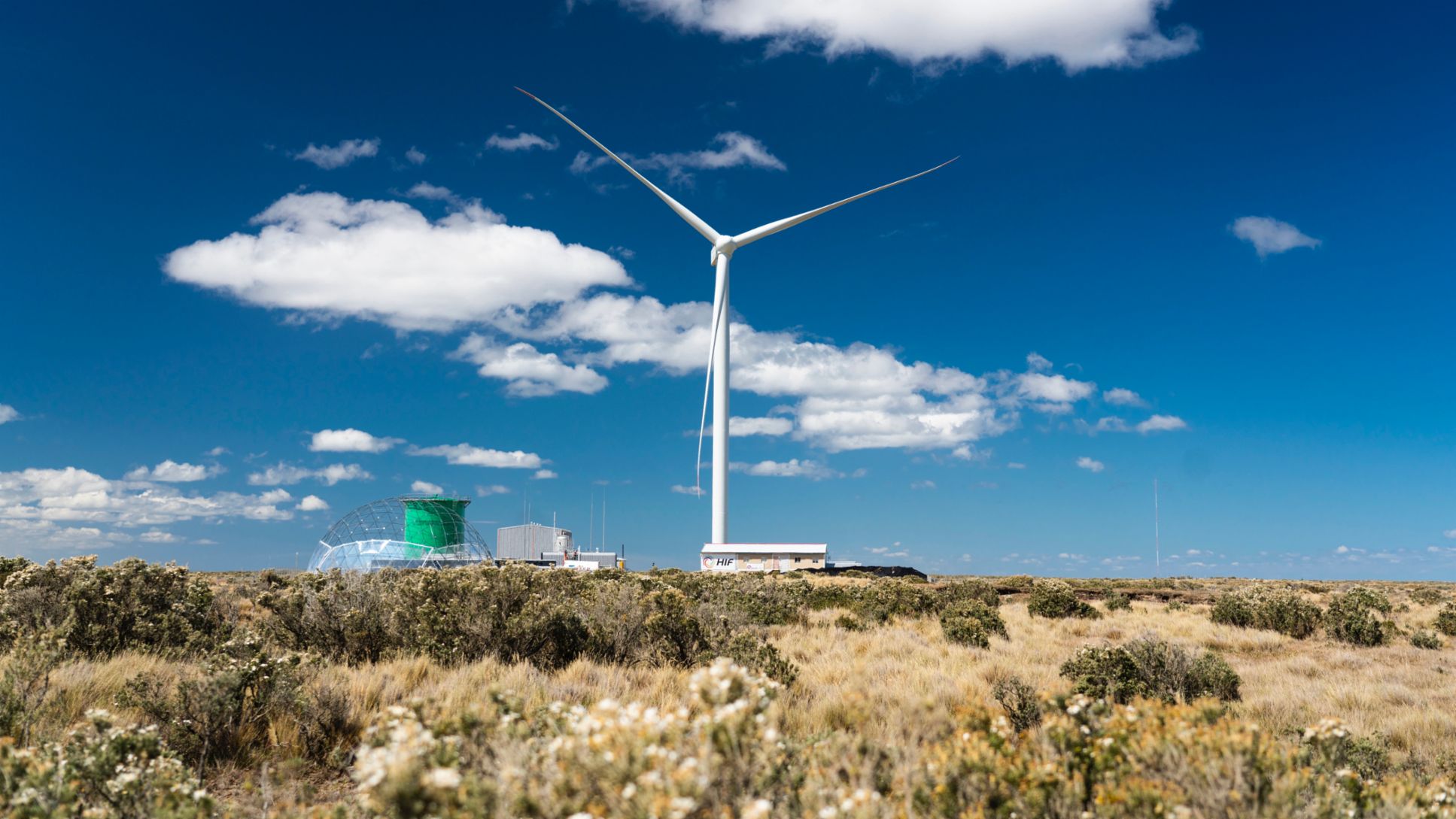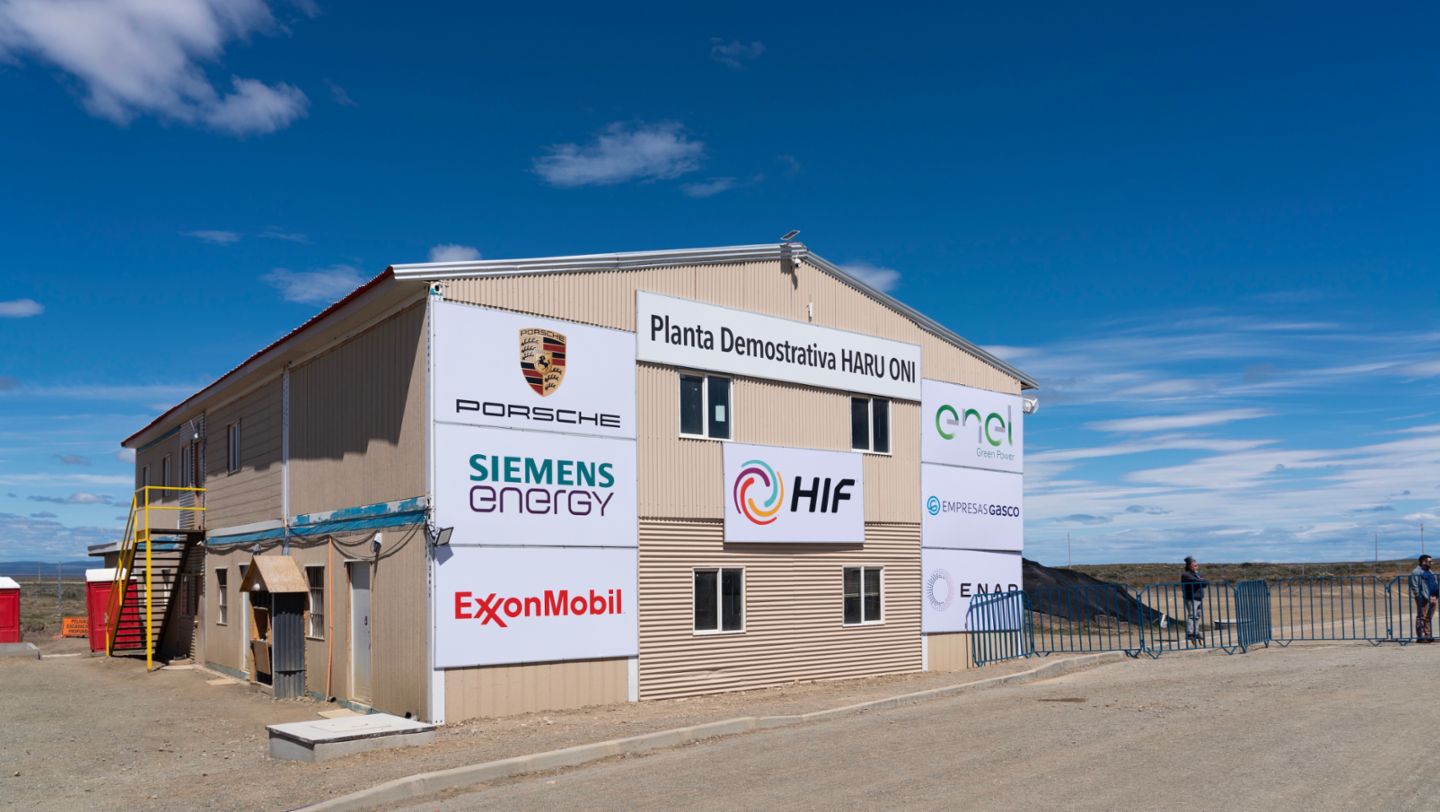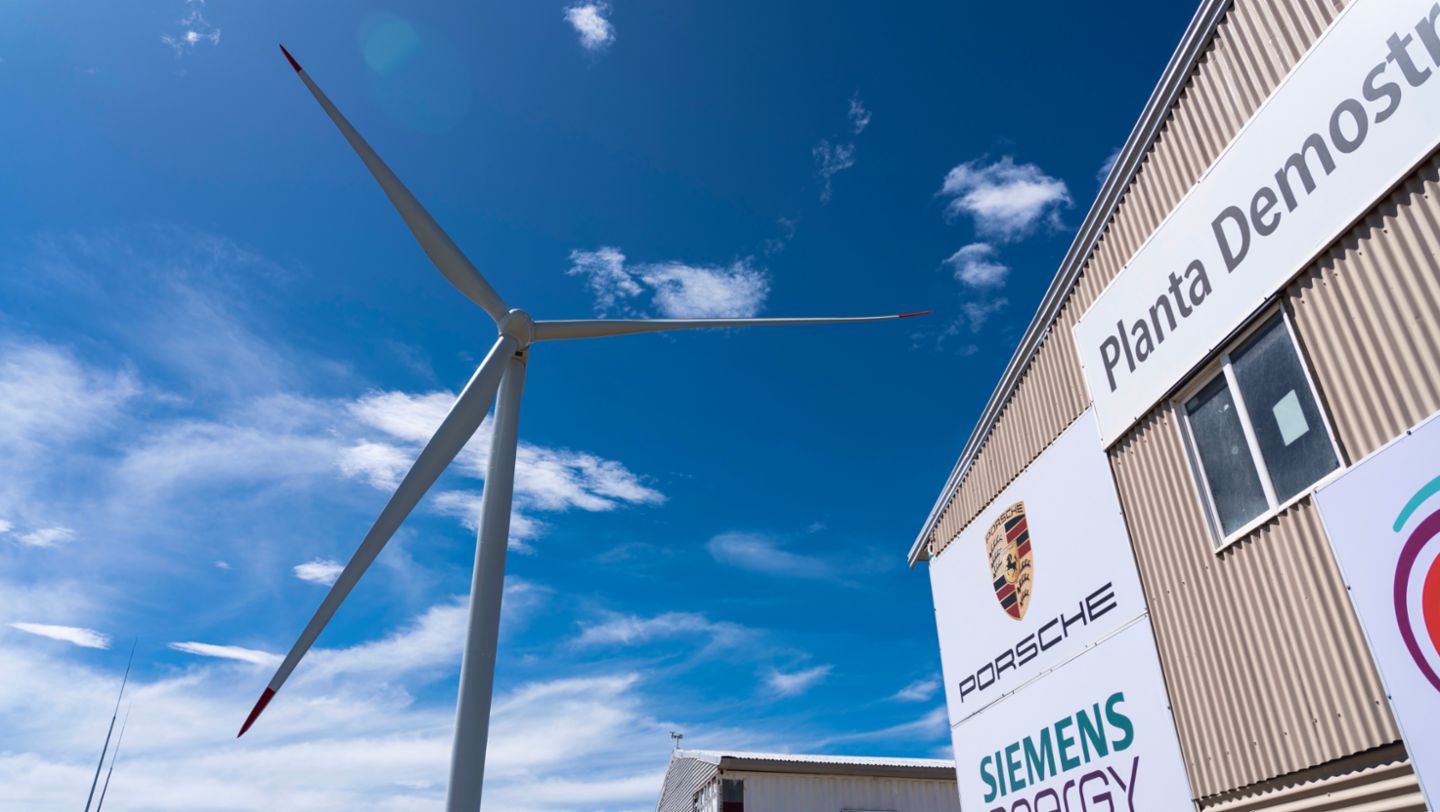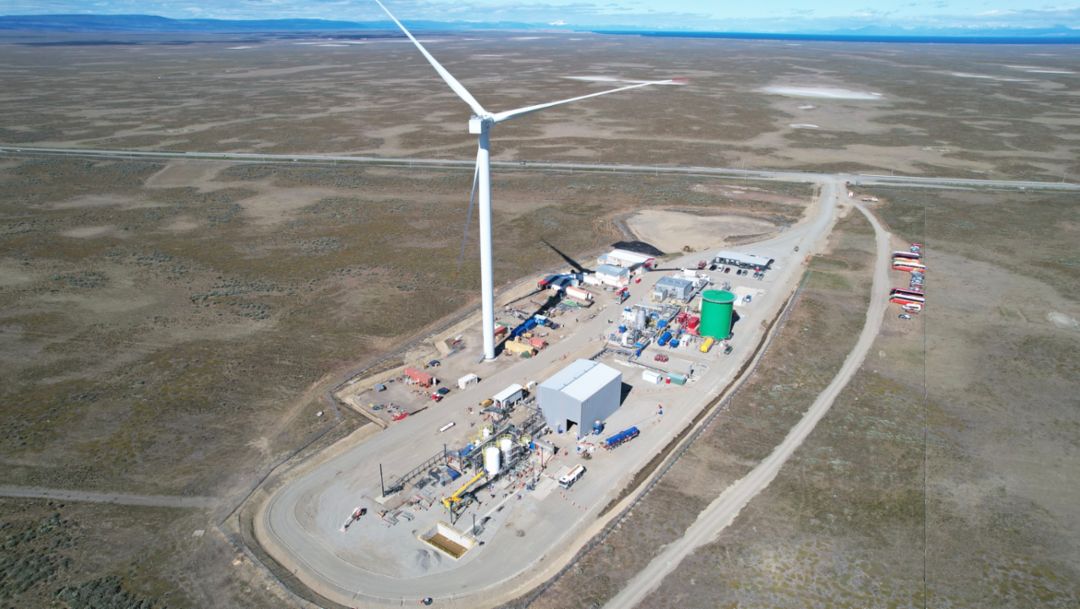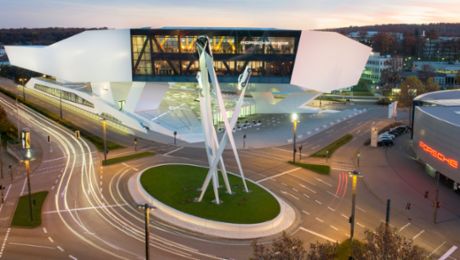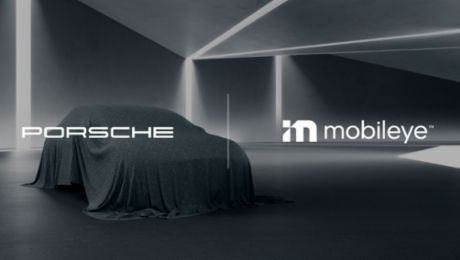It only took five seconds ...
The culmination of the ceremony to mark the opening of the new Haru Oni eFuels plant in Punta Arenas, Chile, saw a Gentian Blue Porsche 911 being filled with the extraordinary nearly carbon-neutral new fuel by no less than Barbara Frenkel, Member of the Executive Board for Procurement of Porsche AG.
And five seconds later, the 911 was in a little drift …
At its wheel was Michael Steiner, the member of Porsche’s executive board responsible for research and development who had travelled to Chile for the event.
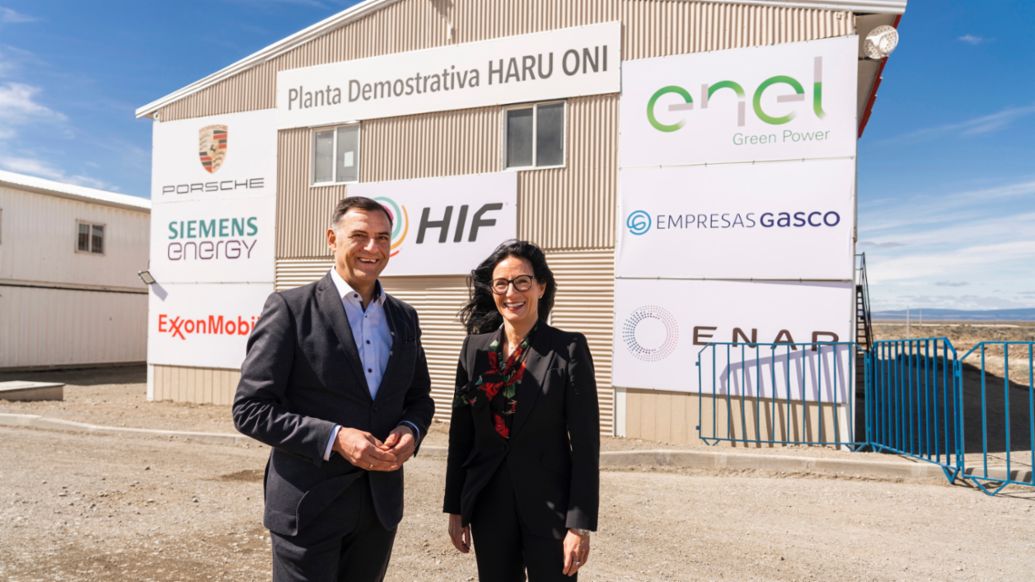
His brief was to do a lap or two of the base of the massive wind turbine for the waiting news crews and photographers. But, as anyone who has had the good fortune to spend a bit of time in his company will attest, Steiner is a car enthusiast. There were no crowds round the back of the turbine. A Porsche 911 is a Porsche 911. And, despite this particular hydrocarbon being created using the power of the wind from little more than water and CO₂, it can propel Zuffenhausen’s finest with no modifications to the car whatsoever.
So, within a few seconds of setting off, Steiner did what came naturally and gave the 911 a little gas, executing a neat drift round the back of the turbine. The revs of the engine rose, a little dust was kicked up and a bit more history had been made – the first drift had been performed using Haru Oni’s new eFuel.
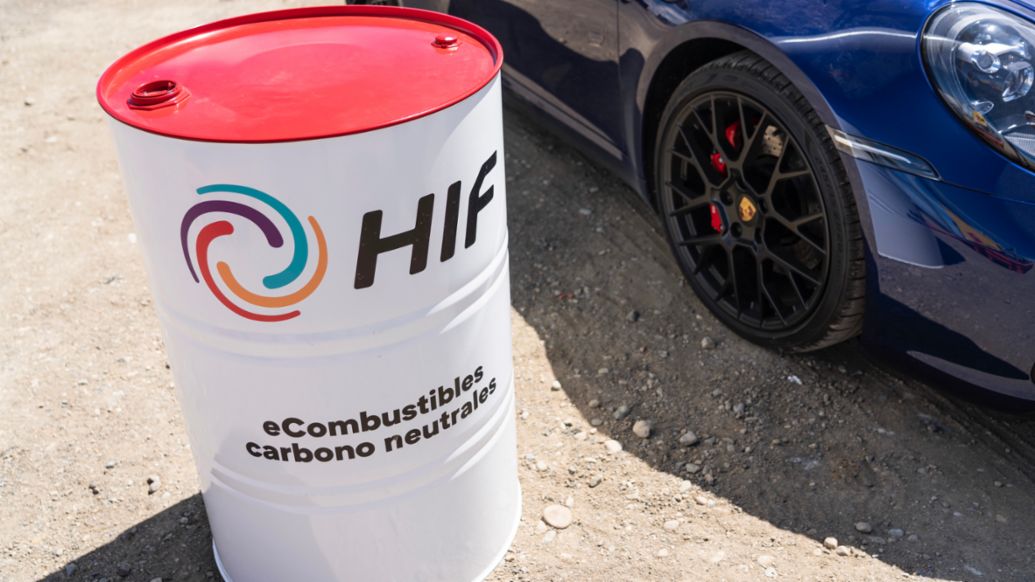
This little moment sums up what is going on down on the shores of the Straits of Magellan, in windy Patagonia. Porsche has invested heavily in HIF (Highly Innovative Fuels), which has built this industrial eFuel plant – one of the first in the world – in order to produce gasoline from scratch.
With pioneering spirit embedded deep in its DNA, Porsche began its search for a synthetic fuel that would allow combustion engines to be operated in an almost CO₂-neutral manner some years ago. Echoing the words of Ferry Porsche himself, who said that he could not find the sports car that he dreamed of, so decided to build it himself, the sportscar manufacturer could not find the eFuel that it wanted, so invested more than 100 million US dollars and brought its project management skills and huge knowledge of high-performance engines to bear in order to back HIF in its efforts to bring eFuels to bear.
Situated just outside Punta Arenas, in a spot where wind turbines run at peak efficiency up to four times as frequently as they do in the windiest spots in Germany, the plant makes eFuel by splitting water into its constituent components of hydrogen and oxygen in the first step. It releases the latter into the atmosphere, in the words of one of the engineers in Chile, “like a synthetic tree” and then combines the hydrogen with CO₂ that would otherwise be in the atmosphere to methanol. A final process then turns that methanol into gasoline.
Even if the finished product were to be shipped all the way back to Europe at the industrial scale that is expected, the transport creates very little CO₂, especially compared to the amount that the making of the fuel removes from the atmosphere.
While Porsche is still very much committed to electromobility, and to selling more than 80 per cent of its cars with an all-electric drivetrain in 2030, it has always made cars of the highest quality and desirability, with the result that a great many of the Porsche cars produced over the years are still on the road. The type of fuel that this pilot plant is producing will enable those cars’ engines to run long into the future without the need to burn fossil fuels in them.
More significantly, in the words of Steiner, it’s “not just at Porsche. Today there are around 1.3 billion vehicles with combustion engines on the road worldwide. And, according to the forecasts, this number is not going to fall significantly in the next 15 years – despite the ramp-up of electromobility.” Beyond cars, there was much talk at the opening ceremony about the need for this regenerative fuel in the aviation and shipping industries.
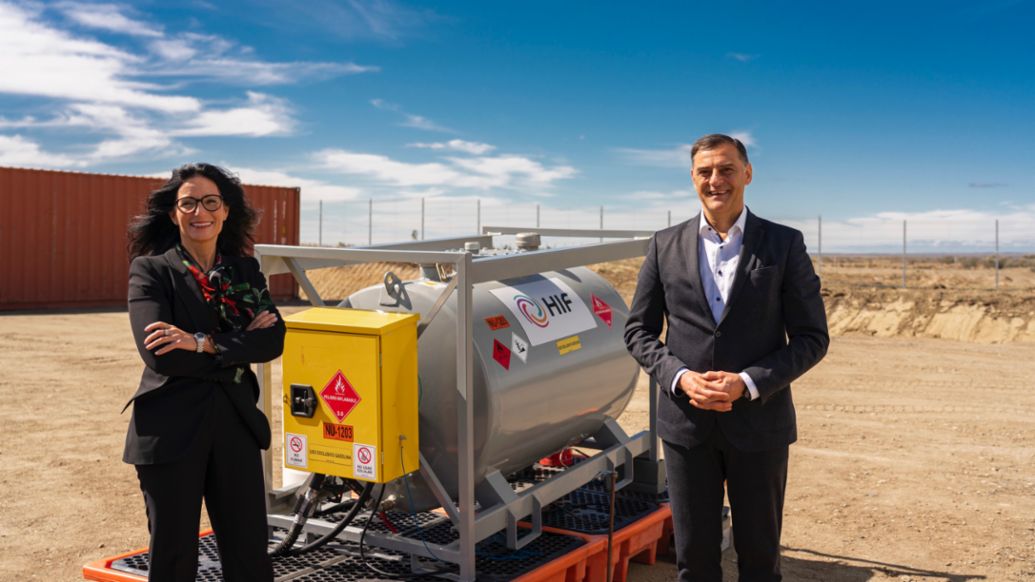
But, to start with, all 130,000 litres a year that are produced at Haru Oni will be used in the Porsche Mobil 1 Supercup and worldwide in other lighthouse projects such as in Porsche Experience Centres. By 2026, it is expected that 55 million litres of fuel will be produced at Haru Oni and, just two years later, 10 times that amount.
Haru Oni is a symbol of hope in the fight against climate change, for a more sustainable future – and one that might also feature the music of a Porsche engine.
